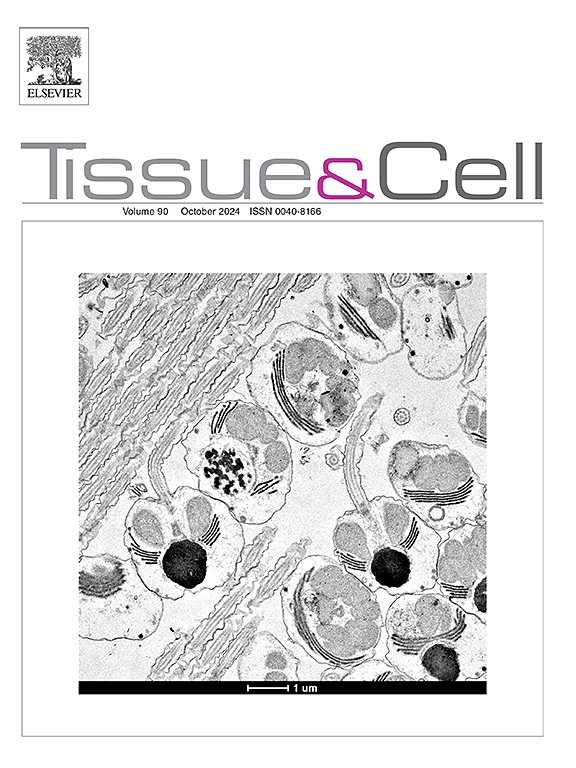用于肿瘤有效治疗的血管栓塞纳米生物材料
IF 2.7
4区 生物学
Q1 ANATOMY & MORPHOLOGY
引用次数: 0
摘要
栓塞是一种微创的癌症治疗方法。栓塞包括使用栓塞剂人工阻断血液流动,阻塞为特定病变提供营养或氧气的异常血管,从而杀死病变,抑制其生长并止血。目前,聚乙烯醇(PVA)和明胶是最常用的栓塞剂。这些物质有各种大小和形状,它们在物理上阻碍血液流动,导致血管栓塞。由于其易于使用和低成本,它们被广泛使用。然而,它们可能引起副作用,如出血和与导管和插入相关的潜在并发症。近年来,纳米生物材料作为高生物相容性的栓塞剂被探索,如液态金属,并可用于自体血液。在这篇综述中,我们涵盖了目前用于癌症治疗的栓塞剂的类型,重点介绍了那些副作用较小、血管损伤最小的栓塞剂,然后讨论了正在开发的新栓塞剂。此外,我们还探讨了开发更好的栓塞剂的潜在未来研究方向。本文章由计算机程序翻译,如有差异,请以英文原文为准。
Vascular embolic nanobiomaterials for efficient tumor treatment
Embolization is a minimally invasive cancer treatment method. Embolization involves artificially blocking blood flow using an embolic agent to block abnormal blood vessels that supply nutrients or oxygen to a specific lesion, thereby killing the lesion, inhibiting its growth, and stopping bleeding. Currently, polyvinyl alcohol (PVA) and gelatin are the most popular embolic agents. These substances are available in various sizes and shapes that physically obstruct blood flow to cause vascular embolization. They are commonly used due to their ease of use and low cost. However, they can cause side-effect such as bleeding and potential complications related to catheter- and insertion-related complications. Recently, nanobiomaterials have been explored as embolization agents with high biocompatibility, such as liquid metals, and can be used with autologous blood. In this review, we cover the types of embolic agents currently used in cancer treatment and focus on those with fewer adverse effects and minimal vascular damage, followed by discussions on new embolic agents under development. Additionally, we explore potential future research directions for developing better embolic agents.
求助全文
通过发布文献求助,成功后即可免费获取论文全文。
去求助
来源期刊

Tissue & cell
医学-解剖学与形态学
CiteScore
3.90
自引率
0.00%
发文量
234
期刊介绍:
Tissue and Cell is devoted to original research on the organization of cells, subcellular and extracellular components at all levels, including the grouping and interrelations of cells in tissues and organs. The journal encourages submission of ultrastructural studies that provide novel insights into structure, function and physiology of cells and tissues, in health and disease. Bioengineering and stem cells studies focused on the description of morphological and/or histological data are also welcomed.
Studies investigating the effect of compounds and/or substances on structure of cells and tissues are generally outside the scope of this journal. For consideration, studies should contain a clear rationale on the use of (a) given substance(s), have a compelling morphological and structural focus and present novel incremental findings from previous literature.
 求助内容:
求助内容: 应助结果提醒方式:
应助结果提醒方式:


